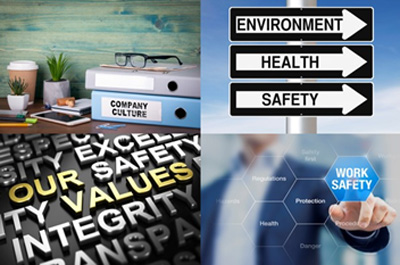Safety Culture Workshop 2019 Summary Report
Safety Culture Workshop 2019 Summary Report [PDF 180 KB]
Listening, Leveraging and Learning from Each Other
April 20, 2019
Introduction
The National Energy Board (NEB) hosted a Safety Culture Workshop on 28 February 2019 at NEB offices in Calgary, Alberta. This initiative brought together 14 representatives from 8 NEB regulated companies and a number of NEB technical staff and executives to have an open dialogue on safety culture advancement efforts, challenges and best practices. The workshop facilitated meaningful conversation among the participants and encouraged sharing of experiences and learning from one another in a small group environment.
The workshop objectives were to:
- Promote learning and sharing across NEB regulated companies and between the NEB and regulated companies;
- Listen and learn from the actions of others to improve our own performance.
Prior to the workshop, participants were asked to identify key topics that would be most valuable to discuss. In addition to sharing specific safety culture tactics and strategies employed during the past year, attendees identified other areas of interest. Contractor/sub-contractor safety culture and the detection of human and organizational factors in incident data were noted as areas of significance. Two sessions were held to better understand what organizations are doing in these areas, and how efforts might be improved.
NEB Efforts Related to Safety Culture (2018/19)
The NEB shared information regarding the following safety culture related initiatives undertaken in 2018/19:
- Regulatory collaboration with other agency members of the North American Regulators Working Group on Safety Culture and the International Regulators Forum (IRF) including the development of shared safety culture oriented tools and resources;
- Participation in a recent Organization for Economic Cooperation and Development Behavioural Insights and Safety Culture research study; and
- Piloting of a project aimed at collecting signals of safety culture from observations made during inspections to determine where more conversation and focus needs to be had on the safety culture front.
Participants were keen to hear about learnings associated with the signals pilot project. Industry members also expressed interest in receiving feedback regarding signals that may be identified during inspections.
Industry Efforts Related to Safety Culture (2018/19)
Several workshop participants described recent organizational efforts to advance safety culture. There were varying levels of organizational maturity in this area and variation in the activities captured under the safety culture umbrella. Different experiences in raising staff awareness, assessing maturity and improving safety culture resulted in diverse perspectives and opportunities to learn from one another.
Workshop participants identified a number of approaches being used to educate staff, assess safety culture and make advancements, including:
- Developing customized organization-specific safety culture frameworks and/or models;
- Employing various tools to evaluate safety culture at worksites and across the organization;
- Targeting safety culture leadership training across all organizational areas (not only Operations);
- Sharing of high learning events to improve organizational awareness of human and organizational threats; and
- Using innovative education and communication tactics such as podcasts to raise safety culture awareness.
What We Heard about Contractor Safety Culture
Participants noted that evaluating and monitoring contractor/sub-contractor safety culture is a challenge associated with broader industry safety culture advancement. Other industries and jurisdictions have identified similar issues and developed related strategies and recommendations, including:
- Focusing on long-term relationships with suppliers in order to enhance collaboration and knowledge sharing (e.g., facilitating two-way learning and feedback loops);
- Pre-qualification of contractors based upon indicators that capture the organization's ability to prevent, predict and manage risk (e.g., status of implementing improvement plans, results of audit programs, management involvement and the quality of how near misses, incidents and risk assessment processes are managed and related issues resolved); and
- Performing extensive planning and analysis during the contracting process (e.g., early engagement of contractors in the planning process) in order to understand how contractual conditions may affect risk-sharing between operator and contractor.
Workshop attendees discussed the relevance of these findings to the oil and gas sector and offered insights about alternative approaches that are currently being employed and lessons learned.
Successful strategies currently being employed by participants include facilitating alignment between contractor and operator safety culture using workshops and relationship building. These efforts focus on forming a common view on safety, gain a commitment to best practices, identify risks and mitigation measures and align values in order to develop a high level of trust between all parties involved in the project.
What We Heard about Human and Organizational Factors in Incident Data
At last year’s NEB-Industry safety culture workshop, participants noted that there were limited tools and guidance available to support the implementation and integration of human and organizational factors in incident investigations and follow up. As a result, NEB staff developed and tested an analytic method for assessment of incident data using a human and organizational factors lens specific to safety culture in order to identify pertinent themes. A high-level overview of the approach was shared with participants in order to facilitate a discussion regarding industry advancement in this area.
The conversation highlighted attendee interest in identifying human factors (in addition to the organizational factor of safety culture) in incident investigations. Attendees shared best practices in considering human and organizational factors from other high hazard industries (e.g., nuclear, aviation) and considered how they may be leveraged in the oil and gas industry. Discussions also pointed to the opportunity to consider these factors in areas other than incident investigations (e.g., inspections) to support more proactive safety efforts.Next Steps
Participant feedback and evaluation forms noted that regulator-industry workshops (tailored to the topic of safety culture) represent valuable opportunities for the exchange of ideas and gathering of feedback. Continued investment in similar sessions that explore important topics related to safety culture should be considered. Additional outreach will be planned with industry members to gather specific ideas about how this effort may be effectively sustained.
- Date modified:
